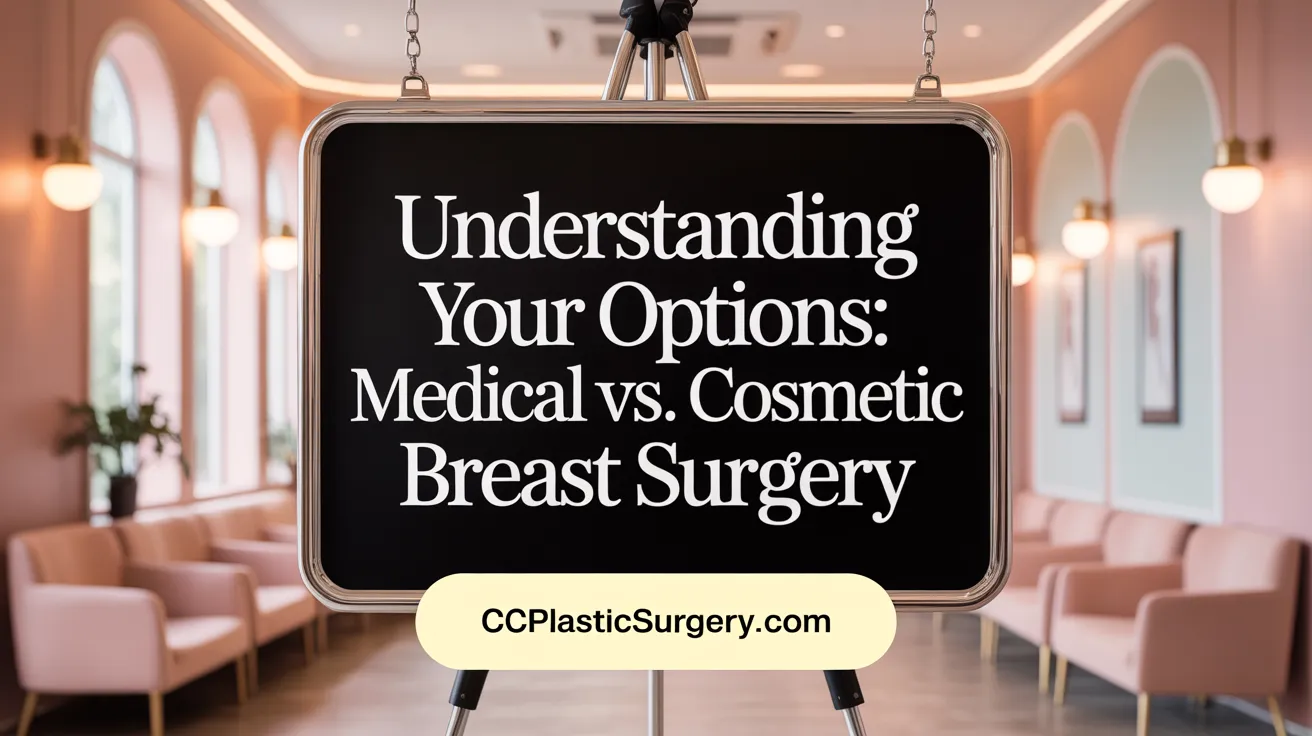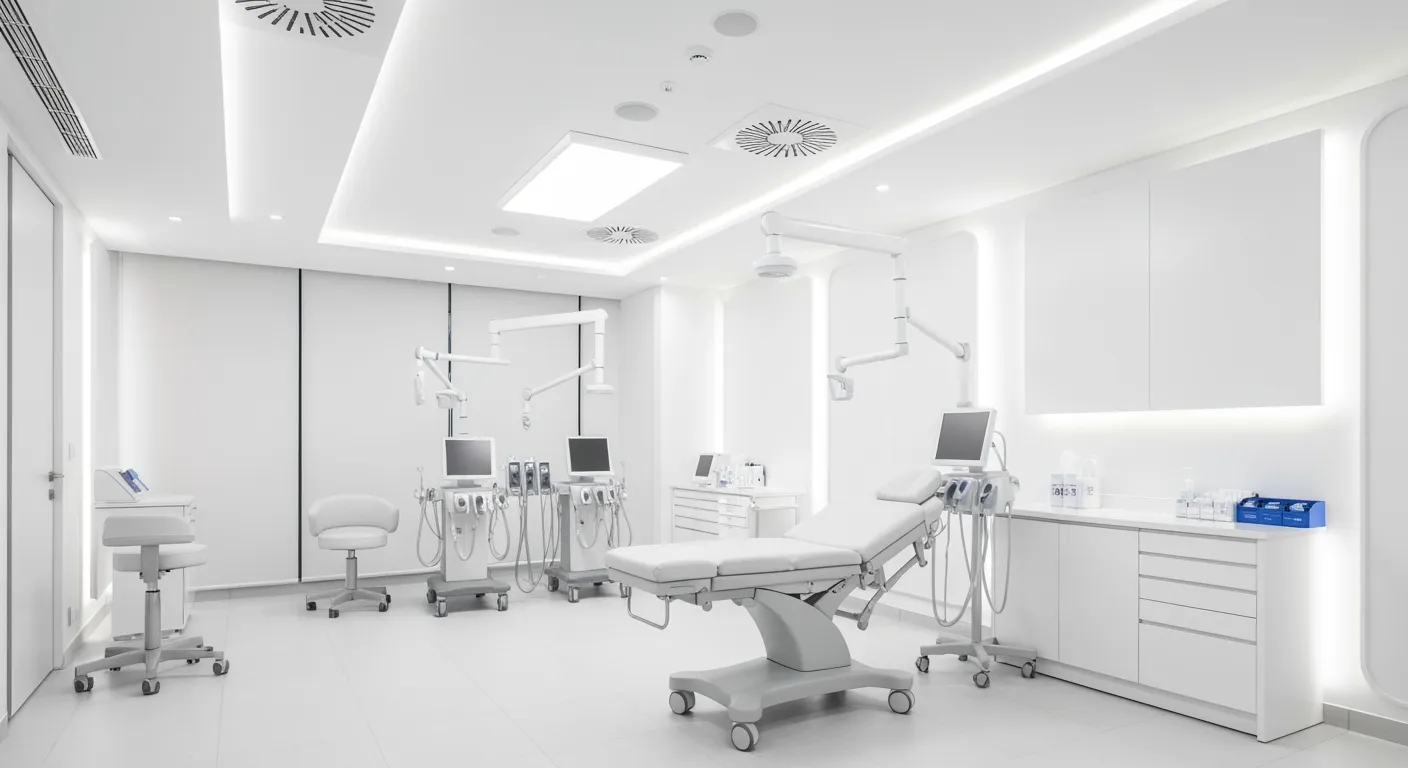
November 13, 2025
what is revision rhinoplasty surgery: candidacy & recovery
what is revision rhinoplasty surgery? Learn who qualifies, what to expect during recovery, and tips for choosing a skilled, trusted surgeon.
Nov 13, 2025

Breast surgery primarily includes procedures such as lumpectomy (breast-conserving surgery), mastectomy, lymph node removal, and breast reconstruction.
Breast surgery treats breast cancer, removes benign lumps, addresses high genetic risk, relieves physical discomfort, or serves cosmetic goals. Surgical choices are personalized based on tumor characteristics, genetic factors (e.g., BRCA mutations), body image considerations, and lifestyle.
Studies have shown that breast-conserving surgery followed by radiation therapy offers comparable long-term survival to mastectomy. Recurrence risk is slightly higher with lumpectomy but manageable with vigilant follow-up. Women’s quality of life often benefits from breast conservation due to less impact on body image and sensation, while mastectomy may reduce radiation need depending on lymph node involvement. Shared decision-making with healthcare professionals ensures tailored treatment aligned with medical needs and personal values.

Breast surgery encompasses a range of procedures designed for both medical treatment and cosmetic enhancement. Medical breast surgeries primarily address conditions such as breast cancer and include lumpectomy (breast-conserving surgery), various types of mastectomy (removal of the entire breast), and lymph node removal to check for cancer spread. These surgeries may be accompanied by radiation, chemotherapy, or hormone therapy depending on the cancer’s progression.
On the other hand, cosmetic breast surgeries focus on altering breast appearance to match personal aesthetic goals. Common cosmetic procedures include breast augmentation to increase breast size using implants or fat transfer, breast lift (mastopexy) which repositions and tightens existing breast tissue, and breast reduction that removes excess breast tissue and skin to relieve physical discomfort and improve body contour.
Patients consider breast surgery for a variety of reasons. Medical indications include the treatment of breast cancer, removal of benign lumps, or managing risk in genetically predisposed individuals, particularly those with BRCA gene mutations. For some, physical symptoms such as back, neck, or shoulder pain caused by disproportionately large breasts prompt consideration of reduction surgery.
Cosmetic motivations are equally important. Many seek surgery to enhance breast size, improve symmetry, or restore breast volume lost due to pregnancy, weight changes, or aging. Reconstructive surgery, including options such as autologous tissue flap reconstruction, is also a vital option for those who have undergone mastectomy to restore breast shape, often improving psychological well-being and body image.
While medical breast surgeries focus on treating disease or high-risk conditions, cosmetic breast surgeries aim to enhance physical appearance and self-confidence. Medical procedures such as lumpectomy and mastectomy involve removing tissue to eliminate cancer, often requiring additional treatments. Cosmetic surgeries primarily involve reshaping, augmenting, or reducing breast tissue without disease treatment.
Understanding the distinct purposes, types, and considerations guides patients and clinicians in selecting the most appropriate surgical option tailored to individual health needs and aesthetic preferences.

Lumpectomy, also called breast conserving surgery, involves removing the cancerous tumor along with a margin of surrounding healthy tissue. Mastectomy entails removing the entire breast and, depending on the case, some lymph nodes. Both approaches aim to treat breast cancer effectively, but they differ in the amount of tissue removed and potential cosmetic outcomes.
Research shows that lumpectomy paired with radiation therapy yields survival rates comparable to mastectomy. Both options offer excellent long-term outcomes of breast cancer surgery. However, lumpectomy carries a slightly increased risk of cancer recurrence in the remaining breast tissue, approximately 5-10%, compared to about 5% for mastectomy. Despite this, breast cancer recurrence risks tend to be detected early and can be managed successfully.
Recovery after lumpectomy is generally quicker, often allowing return to normal activities within 5 to 10 days. Mastectomy recovery takes longer, usually 3 to 4 weeks, and may involve additional time if reconstruction is pursued. Since lumpectomy preserves much of the breast, it tends to have less impact on body image, sensation, and sexuality. Mastectomy alters the breast’s appearance more significantly, though breast reconstruction options can help restore breast shape and contribute positively to patient confidence.
Both surgeries offer similar long-term survival rates; however, lumpectomy carries a slightly higher risk of cancer recurrence but preserves the breast's appearance and sensation.
The decision depends on tumor characteristics such as size and location, genetic predisposition and mastectomy including BRCA1 and BRCA2 mutations, patient lifestyle considerations, fears about cancer recurrence, body image priorities, and practical factors like access to radiation therapy facilities. Discussing breast cancer surgery with healthcare professionals using shared decision-making ensures treatment aligns with both medical needs and personal preferences.

Breast reconstruction aims to restore breast shape and appearance after mastectomy, offering physical and psychological benefits. There are two main types:
Breast reconstruction can be done:
Each timing choice is individualized, considering the patient’s health, cancer treatment plan, and personal priorities. For more on this, see immediate versus delayed reconstruction.
| Aspect | Implant Reconstruction | Flap Reconstruction |
|---|---|---|
| Surgery Duration | Shorter, less invasive | Longer, complex surgery |
| Recovery Time | Faster recovery | Extended recovery, potential donor site discomfort |
| Natural Appearance | Less natural feel, potential complications like capsular contracture | More natural look and feel, better aging match |
| Risks | Implant rupture, infection, rare lymphoma (breast implant-associated anaplastic large cell lymphoma) | Donor site complications, delayed wound healing |
| Longevity | Implants typically require replacement over 7–10 years | Usually permanent, but depends on overall health |
Some women opt out of breast reconstruction after mastectomy, choosing "aesthetic flat closure." This approach involves contouring the chest wall to achieve a smooth, flat appearance without implants or flaps. Reasons include minimizing additional surgeries, reducing complication risks, and faster recovery times. It can provide a patient-centered alternative for those prioritizing comfort and simplicity over reconstruction.
These reconstruction decisions are highly personal and best made through detailed discussions with surgical and oncologic teams. Personalized care ensures patients receive the safest, most effective procedures aligned with their goals and lifestyle. For guidance on personalized surgical decisions breast cancer.
Breast augmentation mainly involves silicone breast implants or saline breast implants. Silicone implants are favored for their natural look and feel. However, breast implants are not lifetime devices; most last around 10 years but may require replacement due to complications or personal preference. For more details on risks and longevity, see Breast Augmentation Risks.
The FDA has implemented new safety mandates, including boxed warning for breast implants, a patient decision checklist for implants to be reviewed with healthcare providers, updated screening recommendations to detect ruptures early, and detailed manufacturer's breast implant educational materials. These measures ensure patients are well-informed before proceeding.
Complications can occur, such as capsular contracture risk where scar tissue tightens around the implant causing firmness or distortion. Other risks include implant rupture, breast pain, changes in nipple sensation, infection, and more rarely, breast implant-associated anaplastic large cell lymphoma (BIA-ALCL), a treatable lymphoma linked mostly to textured implants.
Women with silicone implants should have regular MRI and ultrasound screening for implants starting 5–6 years post-implantation and periodically thereafter, to screen for silent ruptures. Follow-up care includes monitoring for any changes or symptoms that might indicate complications and consulting a specialist as needed.
It is vital for patients to know implants require ongoing monitoring, are not permanent, and carry risks including capsular contracture, implant rupture, and the rare possibility of breast implant-associated anaplastic large cell lymphoma. Thorough discussion with a board-certified plastic surgeon and reviewing FDA educational materials is recommended.
The FDA mandates boxed warnings on implant packaging, a patient decision checklist reviewed during consultation, updated recommendations for regular rupture screening, and provision of comprehensive patient education materials, enhancing patient safety and informed consent.

Shared decision-making is a collaborative process that integrates clinical expertise with the patient’s individual preferences, fears, values, and lifestyle considerations. This approach helps ensure that breast cancer surgery options—whether breast conserving surgery vs mastectomy (lumpectomy), mastectomy, or breast reconstruction options—are personalized and aligned with what matters most to each patient. Evidence shows that involving patients in decisions leads to greater satisfaction, better understanding of risks and benefits of breast surgery, and treatment plans that honor both medical indications and personal goals.
A comprehensive discussion between patients and their healthcare providers is essential. Topics should include medical history, the presence of genetic risk factors such as BRCA1 and BRCA2 mutations, cosmetic and functional goals, expectations for recovery time, and possible side effects of treatments including radiation or chemotherapy. Patients should also address concerns about body image, sensation changes, and long-term surveillance. This open communication allows surgeons to tailor surgical plans appropriately and helps patients make well-informed choices, fostering improved personalized surgical decisions breast cancer.
Patient-centered conversations acknowledge the emotional impact of breast cancer and surgery. By cultivating a supportive environment, healthcare teams can explore fears of breast cancer recurrence risks, preferences related to radiation therapy, and desires for breast preservation or reconstruction. This approach respects respect for patient autonomy and enhances confidence in the selected treatment.
Genetic testing results play a critical role in decision-making. For example, positive BRCA mutation status may sway patients toward preventive mastectomy. Clinical consultations involving multidisciplinary teams, including surgical oncologists and radiation specialists, provide comprehensive insights, helping patients weigh complex options effectively as part of shared decision-making in breast cancer surgery.
Utilizing educational tools like decision aids improves patient understanding of surgical risks, benefits, and alternatives. These resources support clearer expectations, reduce decisional conflict, and have been shown to increase the likelihood of breast conserving surgery vs mastectomy when appropriate. They empower patients to participate actively in their care journey through discussing breast cancer surgery with healthcare professionals.

Recovery timelines depend on the specific type of Types of breast surgery performed. For lumpectomy breast conservation surgery, patients can typically expect to resume normal activities within 5 to 10 days. Mastectomy breast removal procedures generally require a longer recovery period of about 3 to 4 weeks. When breast reconstruction options is involved, recovery may extend to 6 to 8 weeks or more due to the complexity of the surgery and tissue healing involved.
Breast surgery carries risks such as bleeding, infection, and persistent pain. Scarring is inevitable but can be minimized with appropriate surgical techniques. For implant reconstruction, capsular contracture—the tightening of scar tissue around the implant—is a notable risk. Additionally, removal of lymph nodes during surgery can increase the chance of lymphedema, a swelling of the arm, requiring ongoing management as described under Axillary Lymph Node Dissection.
Postoperative care includes managing wounds, possibly using surgical drains to prevent fluid buildup, and wearing specialized support garments. Patients are advised to follow activity restrictions, avoiding strenuous exercise and heavy lifting until cleared by their surgeon. Effective pain management and monitoring for signs of infection or complications are essential during this time, detailed in Postoperative Care After Breast Surgery.
Regular follow-up appointments allow clinicians to assess healing, detect any complications early, and guide additional treatments such as radiation or chemotherapy as needed. Monitoring is particularly important for those with implants, as silent ruptures may occur and require imaging studies like MRI for breast implants. Continued surveillance supports optimal recovery and long-term health outcomes, as emphasized in breast cancer recurrence risks and long-term outcomes.
Choosing the right breast surgery involves understanding medical, genetic, and personal factors. Consider the extent of the cancer, breast size, genetic risks like BRCA mutations, and cosmetic goals. Surgical options range from lumpectomy, which preserves breast appearance, to mastectomy with or without reconstruction.
Each patient’s values, lifestyle, and health status influence the best surgical approach. Some prioritize breast conservation and quicker recovery, while others may opt for mastectomy or aesthetic flat closure. Emotional well-being and body image are critical in this journey.
Engage openly with your healthcare team to discuss risks, benefits, and options. Shared decision-making supports choices aligned with your preferences and clinical needs. Ask questions, seek second opinions if needed, and review all reconstruction and treatment possibilities for confidence in your plan.

November 13, 2025
what is revision rhinoplasty surgery? Learn who qualifies, what to expect during recovery, and tips for choosing a skilled, trusted surgeon.

November 13, 2025
Insights Into Plastic Surgery: Expert Answers and Essential Guidance

November 13, 2025
Navigating Your Breast Surgery Options: Key Factors to Weigh